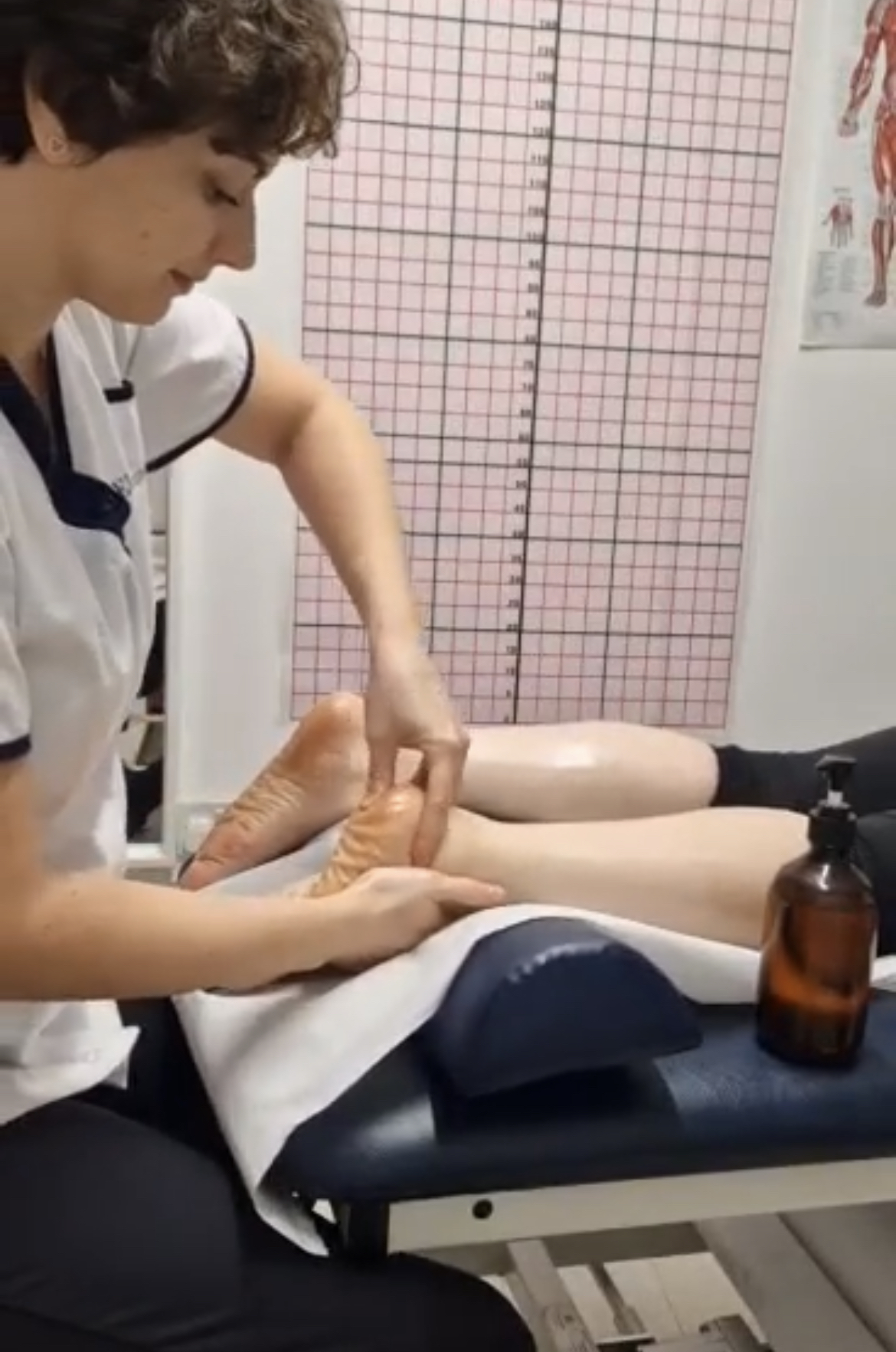Looking for Calcaneal Bursitis treatment? RED Physiotherapy in Milton Keynes & Northampton offers expert physiotherapy for Calcaneal Bursitis to relieve heel pain, reduce inflammation, and restore mobility.
Introduction
Are you experiencing heel pain, swelling, or tenderness at the back of your foot? You may be suffering from Calcaneal Bursitis, a condition that occurs when the bursa at the back of the heel becomes inflamed. This often results from overuse, excessive pressure, or repetitive friction, leading to discomfort and restricted movement.

At RED Physiotherapy in Milton Keynes & Northampton, we specialise in Calcaneal Bursitis treatment, using evidence-based physiotherapy techniques to reduce pain, restore function, and prevent recurrence.
What is Calcaneal Bursitis?
Calcaneal Bursitis is the inflammation of the bursa located between the Achilles tendon and the heel bone (calcaneus). The bursa is a fluid-filled sac that acts as a cushion, reducing friction between tissues. When irritated, it can become inflamed, causing pain, redness, and swelling at the back of the heel.
This condition is commonly mistaken for Achilles tendinitis due to its similar symptoms, but the key difference is that Calcaneal Bursitis affects the bursa, while Achilles tendinitis involves tendon inflammation.
Symptoms of Calcaneal Bursitis
Typical signs of Calcaneal Bursitis include:
- Heel pain and tenderness, especially when walking or running.
- Swelling at the back of the heel.
- Redness and warmth around the affected area.
- Pain that worsens when wearing tight or rigid footwear.
- Stiffness or discomfort after prolonged activity or rest.
Causes & Risk Factors of Calcaneal Bursitis
Several factors can contribute to Calcaneal Bursitis, including:
- Overuse and repetitive stress – Common in runners and athletes.
- Wearing poorly fitting shoes – Tight shoes that press against the heel can irritate the bursa.
- Excessive pressure on the heel – Common in individuals who stand for long hours.
- Achilles tendon strain – Tight calf muscles can pull on the Achilles tendon, increasing stress on the bursa.
- Direct trauma – A sudden impact or fall on the heel.
- Underlying conditions – Conditions like rheumatoid arthritis and gout increase the risk of bursitis.
How Can Physiotherapy Help with Calcaneal Bursitis Treatment?
Physiotherapy is a highly effective treatment for Calcaneal Bursitis, helping to reduce inflammation, relieve pain, and restore full foot function. At RED Physiotherapy, our treatment plans focus on addressing the underlying cause and preventing future flare-ups.
1. Manual Therapy & Soft Tissue Techniques
- Deep tissue massage to reduce tension in the Achilles tendon and surrounding muscles.
- Joint mobilisation to improve ankle and foot movement.
- Trigger point release therapy to relieve tightness and discomfort.
2. Stretching & Strengthening Exercises for Calcaneal Bursitis Treatment
- Calf & Achilles tendon stretches to ease pressure on the bursa.
- Foot strengthening exercises to improve stability and prevent strain.
- Ankle mobility drills to restore flexibility and reduce stiffness.
3. Shockwave Therapy for Calcaneal Bursitis
At RED Physiotherapy, we offer Shockwave Therapy, a non-invasive treatment that:
- Stimulates blood circulation to promote healing.
- Breaks down scar tissue to improve mobility.
- Reduces inflammation and pain sensitivity.
4. Footwear & Orthotics Advice
- Custom insoles to reduce heel pressure and support the arch.
- Guidance on proper footwear to prevent recurrence.
- Heel pads or cushions to absorb impact during movement.
5. Pain Management Strategies for Calcaneal Bursitis Treatment
- Cold therapy & ice application to reduce swelling.
- Taping techniques to provide additional support.
- Anti-inflammatory strategies through exercise and lifestyle modifications.
How Long Does it Take to Recover from Calcaneal Bursitis?
The recovery time depends on the severity of the inflammation. Mild cases improve within 2-6 weeks, while chronic cases may take several months of rehabilitation.
Calcaneal Bursitis Treatment Recovery Timeline:
- Mild cases: 2-6 weeks with proper physiotherapy.
- Moderate cases: 6-12 weeks with structured treatment.
- Chronic cases: 3-6 months with comprehensive rehabilitation.
Prevention Tips for Calcaneal Bursitis Treatment
To prevent Calcaneal Bursitis, follow these tips:
- Wear properly fitted, cushioned footwear.
- Stretch your Achilles tendon and calf muscles regularly.
- Use heel pads or insoles to distribute pressure evenly.
- Avoid sudden increases in physical activity.
- Strengthen the foot and ankle muscles to enhance stability.
When Should You See a Physiotherapist for Calcaneal Bursitis Treatment?
Seek physiotherapy if you experience:
- Persistent heel pain lasting over two weeks.
- Difficulty walking or engaging in physical activity.
- Swelling and tenderness that worsens over time.
- Limited ankle movement affecting daily tasks.
Why Choose RED Physiotherapy for Calcaneal Bursitis Treatment?
At RED Physiotherapy Milton Keynes & Northampton, we provide:
- Comprehensive assessments for accurate diagnosis.
- Personalised treatment plans based on your needs.
- Expert manual therapy & rehabilitation techniques.
- Advanced Shockwave Therapy for effective pain relief.
Our goal is to help you recover quickly, regain function, and prevent future occurrences of Calcaneal Bursitis.
Conclusion
Calcaneal Bursitis treatment is essential for reducing pain and improving mobility. At RED Physiotherapy, we use specialist physiotherapy techniques to ensure long-term recovery and prevent flare-ups.
If you’re suffering from heel pain, book an appointment today at RED Physiotherapy Milton Keynes & Northampton and take the first step toward recovery.
Contact us now to schedule your consultation!
